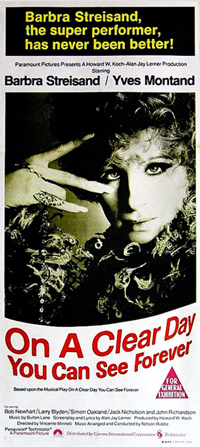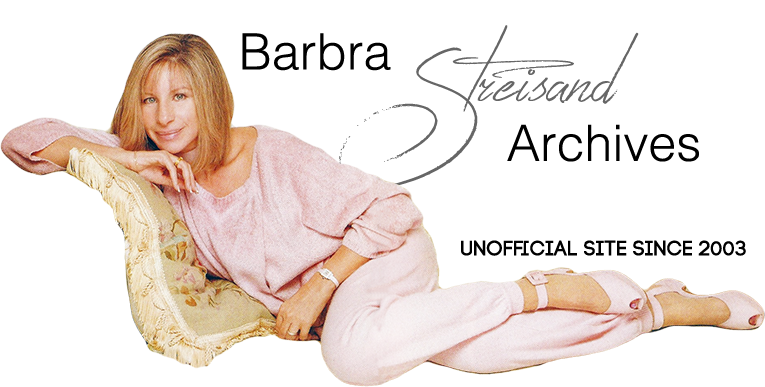Vogue
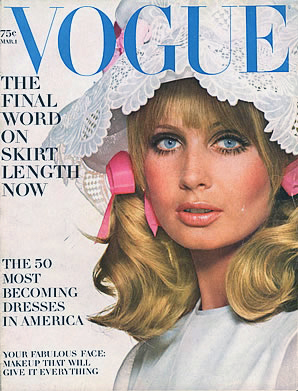
March 1968
People Are Talking About ...
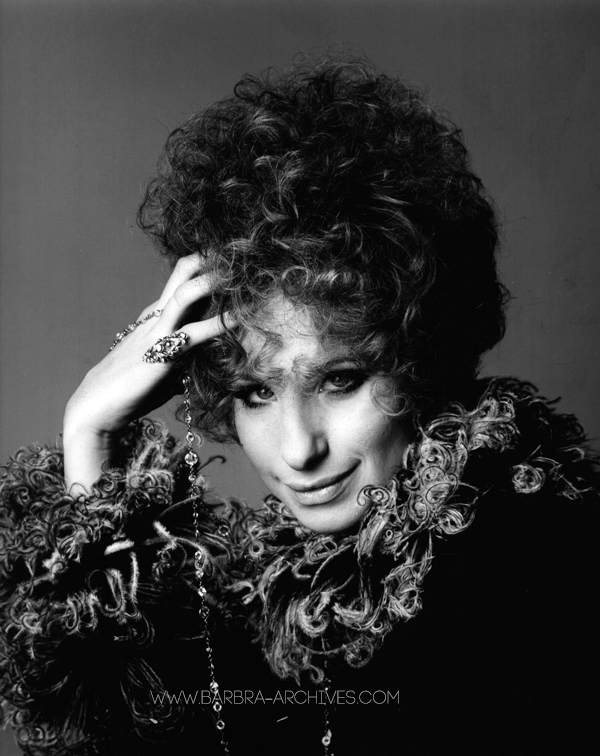
(Photo: Richard Avedon)
Barbra Streisand suddenly looks so new she ought to be patented; what makes this invention is her hair, now a nimbus of champagne-coloured curls, corkscrewing in a froth which changes the shape of her face, the glow of her skin, the slant of her eyes. Not changed at all though is the energy, the voice, the headlong hurl of Streisand. She has finished filming Funny Girl and taping a television special, both scheduled for later this year, is about to start filming Hello, Dolly! and has signed for the film On a Clear Day You Can See Forever. Between times she stays home in her extraordinary Second Empire-rococo New York apartment to see the new world of her baby: "At the moment," she said, "I view the world through this curl in the middle of my forehead." Through a curl and a lorgnette. At a concert in New York with Leonard Bernstein she came onstage in a black dress made memorable by the yards and yards of black lace she had wound into a clown's ruff, and peered at Bernstein through her diamond lorgnette "like a diva soprano looking for her pianist." Barbra Streisand has always known how to use her accessories. Her inspiration is acute. "My personality changed my hair," she said, "not the other way around." But all the same there's not been a Streisand like this before, gentler, less armed. Apparently immutable are her ability to pounce on the inadvertent and the special, her impatience, and her humour. She does little pleasing parodies of herself, twitching her long gown into place with an exaggerated simper and rolling the whites of her eyes like a turn-of-the-century tragedienne. Long clothes are her everyday wear now, since she started to research into the feel and look of the period of Hello, Dolly!, research which also inspired her curls — they derive particularly from photographs of Sarah Bernhardt and Colette surrounded by clouds of crumply floating hair. "I loved the look. I secretly always wanted to have curls," she said, "but I didn't want to return to the Victorian era, I wanted the look in a modern way." As usual, she got it — with the help of her hairdresser Ara Gallant and curling tongs. There's never been a star like Streisand — a needling perfectionist who knows exactly what to choose from the stuff of the times to give herself the look of the times, while remaining absolutely herself. The only Streisand image she recognizes is the reflection in the looking glass, in other people's eyes, and she knows exactly what that reflection looks like. She's the original.
END.
Avedon Photo Session Outtakes
Richard Avedon photographed Streisand with her curly hair in many different poses. One appears on the cover of her 1969 album, What About Today?
Avedon also shot Streisand, draped in fur, for Blackglama fur coats. Jane Trahey, a prominent advertising women of the 1960's, worked with partner Peter Rogers on ads for Blackglama fur coats in 1968. The ads featured celebrities like Barbra Streisand, Lauren Bacall, Judy Garland and Maria Callas wearing mink coats, with the catch phrase ''What becomes a legend most?'' The celebrities were considered so glamorous that they were never identified by name.
"There's no denying that as a group, they comprise the most illustrious list of names ever brought together for commercial purposes," wrote Peter Rogers, in the 1979 book, The Blackglama Story.
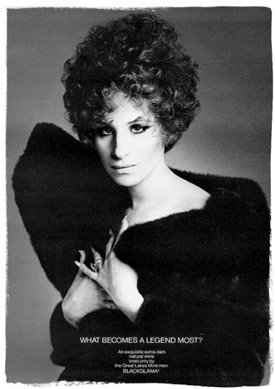
Another alternate photo from this session was used in advertising for Barbra's 1970 film, On A Clear Day You Can See Forever, even though Barbra's image looked nothing like the characters she portrayed in the film!
